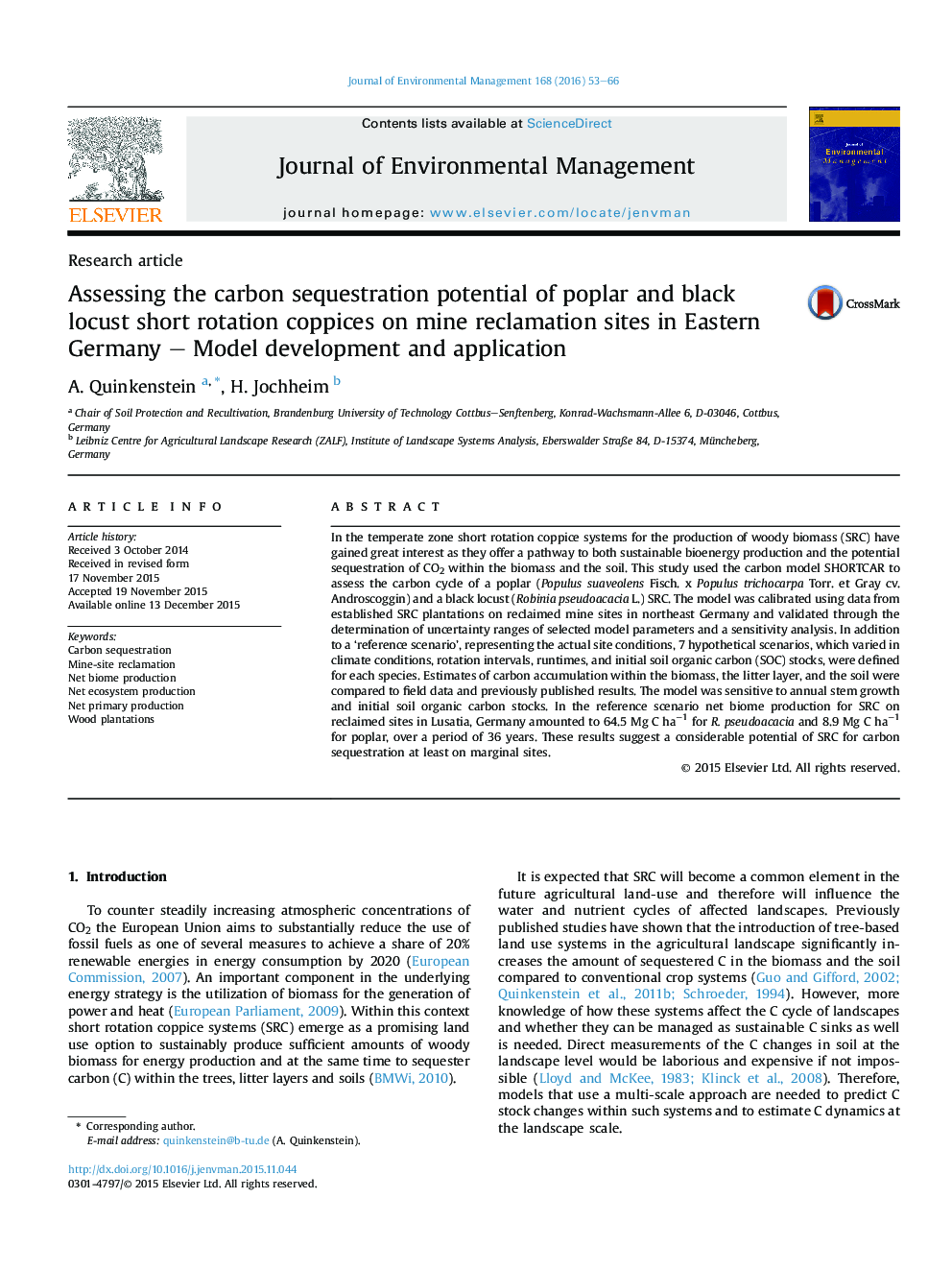| Article ID | Journal | Published Year | Pages | File Type |
|---|---|---|---|---|
| 1055544 | Journal of Environmental Management | 2016 | 14 Pages |
•We model the C cycle of short rotation coppices growing on mining reclamation sites.•Therefore, we develop and evaluate a C model.•We compare the C sequestration potential of black locust and poplar.•C sequestration was mainly controlled by growth, initial SOC, and decomposition.•All scenarios resulted in an additional C accumulation within the system.
In the temperate zone short rotation coppice systems for the production of woody biomass (SRC) have gained great interest as they offer a pathway to both sustainable bioenergy production and the potential sequestration of CO2 within the biomass and the soil. This study used the carbon model SHORTCAR to assess the carbon cycle of a poplar (Populus suaveolens Fisch. x Populus trichocarpa Torr. et Gray cv. Androscoggin) and a black locust (Robinia pseudoacacia L.) SRC. The model was calibrated using data from established SRC plantations on reclaimed mine sites in northeast Germany and validated through the determination of uncertainty ranges of selected model parameters and a sensitivity analysis. In addition to a ‘reference scenario’, representing the actual site conditions, 7 hypothetical scenarios, which varied in climate conditions, rotation intervals, runtimes, and initial soil organic carbon (SOC) stocks, were defined for each species. Estimates of carbon accumulation within the biomass, the litter layer, and the soil were compared to field data and previously published results. The model was sensitive to annual stem growth and initial soil organic carbon stocks. In the reference scenario net biome production for SRC on reclaimed sites in Lusatia, Germany amounted to 64.5 Mg C ha−1 for R. pseudoacacia and 8.9 Mg C ha−1 for poplar, over a period of 36 years. These results suggest a considerable potential of SRC for carbon sequestration at least on marginal sites.
